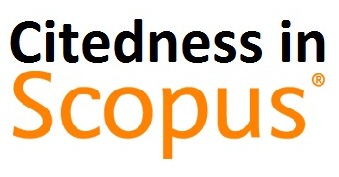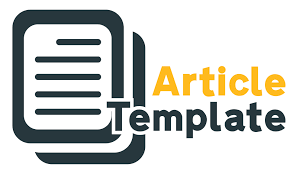Predictive Modeling Classification of Post-Flood and Abrasion Effects With Deep Learning Approach
DOI:
https://doi.org/10.38043/tiers.v3i1.3604Keywords:
Deep Learning, Flood, Clasification, PredictiveAbstract
Floods and abrasion are the most common disasters in Indonesia. A lot of data is collected from post-flood and abrasion disasters. From the data released by BNPB, disaster data is directly based on the occurrence of disasters. From these data, we will test predictive modeling classification with a deep learning approach. Big data can be made through classification and predictive modeling. Our proposed model is a classification of predictive modeling of post-flood and abrasion data using the H2O deep learning approach. Deep learning H2O models can also be evaluated with specific model metrics, termination metrics, and performance charts. This approach is used to optimize the performance and accuracy of predictions during the modeling process using our dataset pool training. The big data to be processed will generate new knowledge for policies in decision making. Big data performance modeled with Deep Learning H2O is used to predict the Survival attributes of post-flood and abrasion sample datasets. The best metric performance is obtained from the maxout activation function with a 200-200 unit layer that gets an accuracy of 93.49% with AUC: 0.808 +/- 0.022 (micro average: 0.808).
Downloads
References
T. Mondal, N. Boral, I. Bhattacharya, J. Das, and P. Pramanik, Distribution of deficient resources in disaster response situation using particle swarm optimization, vol. 41. Elsevier Ltd, 2019.
D. Wu and Y. Cui, “Disaster early warning and damage assessment analysis using social media data and geo-location information,” Decis. Support Syst., vol. 111, no. April, pp. 48–59, 2018, doi: 10.1016/j.dss.2018.04.005.
J. Son, H. K. Lee, S. Jin, and J. Lee, “Content features of tweets for effective communication during disasters: A media synchronicity theory perspective,” Int. J. Inf. Manage., vol. 45, no. October 2018, pp. 56–68, 2019, doi: 10.1016/j.ijinfomgt.2018.10.012.
K. Muhammad, J. Ahmad, and S. W. Baik, “Early fire detection using convolutional neural networks during surveillance for effective disaster management,” Neurocomputing, vol. 288, pp. 1–27, May 2018, doi: 10.1016/j.neucom.2017.04.083.
I. A. Rana, M. Asim, A. B. Aslam, and A. Jamshed, “Disaster management cycle and its application for flood risk reduction in urban areas of Pakistan,” Urban Clim., vol. 38, no. February, pp. 1–12, Jul. 2021, doi: 10.1016/j.uclim.2021.100893.
X. Guan, Y. Zang, Y. Meng, Y. Liu, H. Lv, and D. Yan, “Study on spatiotemporal distribution characteristics of flood and drought disaster impacts on agriculture in China,” Int. J. Disaster Risk Reduct., vol. 64, no. August, pp. 1–13, 2021, doi: 10.1016/j.ijdrr.2021.102504.
E. Yulianto, D. A. Yusanta, P. Utari, and I. Agung, “International Journal of Disaster Risk Reduction Community adaptation and action during the emergency response phase?: Case study of natural disasters in Palu , Indonesia,” Int. J. Disaster Risk Reduct., vol. 65, no. June 2020, pp. 2–11, 2021, doi: 10.1016/j.ijdrr.2021.102557.
M. K. Htein, S. Lim, and T. N. Zaw, “The evolution of collaborative networks towards more polycentric disaster responses between the 2015 and 2016 Myanmar floods,” Int. J. Disaster Risk Reduct., vol. 31, pp. 964–982, 2018, doi: 10.1016/j.ijdrr.2018.08.003.
L. Tan and D. M. Schultz, “Damage classification and recovery analysis of the Chongqing, China, floods of August 2020 based on social-media data,” J. Clean. Prod., vol. 313, no. February, pp. 2–12, 2021, doi: 10.1016/j.jclepro.2021.127882.
A. Kawasaki, N. Ichihara, Y. Ochii, R. A. Acierto, A. Kodaka, and W. W. Zin, “Disaster response and river infrastructure management during the 2015 Myanmar floods: A case in the Bago River Basin,” Int. J. Disaster Risk Reduct., vol. 24, pp. 151–159, 2017, doi: 10.1016/j.ijdrr.2017.06.004.
Q. Qin, Q. Meng, H. Yang, and W. Wu, “Study of the anti-abrasion performance and mechanism of coral reef sand concrete,” Constr. Build. Mater., vol. 291, p. 123263, 2021, doi: 10.1016/j.conbuildmat.2021.123263.
Y. A. Mehanna and C. R. Crick, “Image analysis methodology for a quantitative evaluation of coating abrasion resistance,” Appl. Mater. Today, vol. 25, p. 101203, 2021, doi: 10.1016/j.apmt.2021.101203.
X. Lei et al., “Urban flood modeling using deep-learning approaches in Seoul, South Korea,” J. Hydrol., vol. 601, p. 126684, 2021, doi: 10.1016/j.jhydrol.2021.126684.
A. Damayanti, F. Arifianto, and T. L. Indra, “Development Area for Floating Solar Panel and Dam in The Former Mine Hole (Void) Samarinda City, East Kalimantan Province,” Int. J. Adv. Sci. Eng. Inf. Technol., vol. 11, no. 5, pp. 1713–1720, 2021, doi: 10.18517/ijaseit.11.5.14097.
M. Panahi et al., “Deep learning neural networks for spatially explicit prediction of flash flood probability,” Geosci. Front., vol. 12, no. 3, p. 101076, 2021, doi: 10.1016/j.gsf.2020.09.007.
H. Hosseiny, “A deep learning model for predicting river flood depth and extent,” Environ. Model. Softw., vol. 145, p. 105186, 2021, doi: 10.1016/j.envsoft.2021.105186.
H. Shahabi et al., “Flash flood susceptibility mapping using a novel deep learning model based on deep belief network, back propagation and genetic algorithm,” Geosci. Front., vol. 12, no. 3, p. 101100, 2021, doi: 10.1016/j.gsf.2020.10.007.
C. Wang et al., “Deep learning for predicting subtype classification and survival of lung adenocarcinoma on computed tomography,” Transl. Oncol., vol. 14, no. 8, p. 101141, 2021, doi: 10.1016/j.tranon.2021.101141.
D. Passos and P. Mishra, “A tutorial on automatic hyperparameter tuning of deep spectral modelling for regression and classification tasks,” Chemom. Intell. Lab. Syst., vol. 223, no. October 2021, 2022, doi: 10.1016/j.chemolab.2022.104520.
Y. Qian et al., “Classification of rice seed variety using point cloud data combined with deep learning,” vol. 14, no. 5, pp. 206–212, 2021, doi: 10.25165/j.ijabe.20211405.5902.
S. De Bruin, D. J. Brus, G. B. M. Heuvelink, T. Van Ebbenhorst, and A. M. J. Wadoux, “Ecological Informatics Dealing with clustered samples for assessing map accuracy by,” Ecol. Inform., vol. 69, no. May, p. 101665, 2022, doi: 10.1016/j.ecoinf.2022.101665.
S. K. Sundhara, G. Krishna, N. Bhalaji, and S. Chithra, “BCI cinematics – A pre-release analyser for movies using H 2 O deep learning platform,” Comput. Electr. Eng., vol. 74, pp. 547–556, 2019, doi: 10.1016/j.compeleceng.2018.03.015.
W. Zhu et al., “Phase formation prediction of high-entropy alloys: a deep learning study,” J. Mater. Res. Technol., vol. 18, pp. 800–809, 2022, doi: 10.1016/j.jmrt.2022.01.172.
S. Y. Lee, S. Byeon, H. S. Kim, H. Jin, and S. Lee, “Deep learning-based phase prediction of high-entropy alloys: Optimization, generation, and explanation,” Mater. Des., vol. 197, p. 109260, 2021, doi: 10.1016/j.matdes.2020.109260.
L. Talavera-Martínez, P. Bibiloni, A. Giacaman, R. Taberner, L. J. D. P. Hernando, and M. González-Hidalgo, “A novel approach for skin lesion symmetry classification with a deep learning model,” Comput. Biol. Med., vol. 145, no. September 2021, p. 105450, 2022, doi: 10.1016/j.compbiomed.2022.105450.
B. Harangi, A. Baran, and A. Hajdu, “Assisted deep learning framework for multi-class skin lesion classification considering a binary classification support,” Biomed. Signal Process. Control, vol. 62, p. 102041, 2020, doi: 10.1016/j.bspc.2020.102041.
M. ?okina, V. Maslej-Kreš?áková, P. Butka, and Parimucha, “Automatic classification of eclipsing binary stars using deep learning methods,” Astron. Comput., vol. 36, p. 100488, 2021, doi: 10.1016/j.ascom.2021.100488.
M. Aljabri et al., “Canine impaction classification from panoramic dental radiographic images using deep learning models,” Informatics Med. Unlocked, vol. 30, no. December 2021, p. 100918, 2022, doi: 10.1016/j.imu.2022.100918.
L. Wang, J. Wang, Z. Liu, J. Zhu, and F. Qin, “Evaluation of a deep-learning model for multispectral remote sensing of land use and crop classification,” Crop J., no. xxxx, 2022, doi: 10.1016/j.cj.2022.01.009.
S. Paul, B. Jhamb, D. Mishra, and M. S. Kumar, “Edge loss functions for deep-learning depth-map,” Mach. Learn. with Appl., vol. 7, no. June 2021, p. 100218, 2022, doi: 10.1016/j.mlwa.2021.100218.
Y. Li, R. Qian, and K. Li, “Inter-patient arrhythmia classification with improved deep residual convolutional neural network,” Comput. Methods Programs Biomed., vol. 214, 2022, doi: 10.1016/j.cmpb.2021.106582.
F. Olsen, C. Schillaci, M. Ibrahim, and A. Lipani, “Borough-level COVID-19 forecasting in London using deep learning techniques and a novel MSE-Moran’s I loss function,” Results Phys., vol. 35, no. January 2021, p. 105374, 2022, doi: 10.1016/j.rinp.2022.105374.
Z. Huang et al., “A seven-parameter Bernoulli-Gamma-Gaussian model to calibrate subseasonal to seasonal,” J. Hydrol., p. 127896, 2022, doi: 10.1016/j.jhydrol.2022.127896.
R. Eberle and M. Oberguggenberger, “A new method for estimating the bending stiffness curve of non-uniform Euler-Bernoulli beams using static deflection data,” Appl. Math. Model., vol. 105, pp. 514–533, 2022, doi: 10.1016/j.apm.2021.12.042.
R. Li, B. J. Reich, and H. D. Bondell, “Deep distribution regression,” Comput. Stat. Data Anal., vol. 159, p. 107203, 2021, doi: 10.1016/j.csda.2021.107203.
R. Zheng, S. Zhang, L. Liu, Y. Luo, and M. Sun, “Uncertainty in Bayesian deep label distribution learning,” Appl. Soft Comput., vol. 101, p. 107046, 2021, doi: 10.1016/j.asoc.2020.107046.
Downloads
Published
How to Cite
Issue
Section
License
Copyright (c) 2022 Finki Dona Marleny, Mambang M

This work is licensed under a Creative Commons Attribution-ShareAlike 4.0 International License.





















